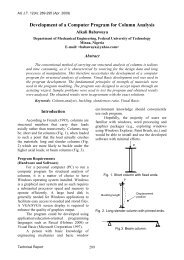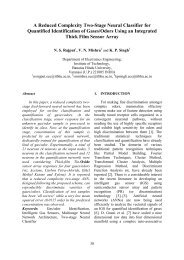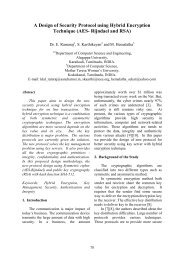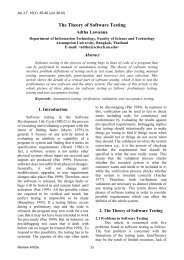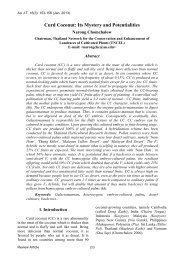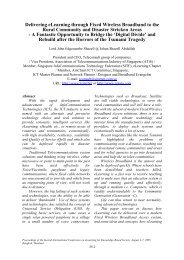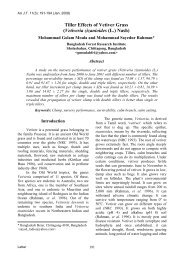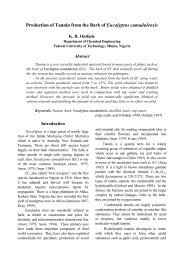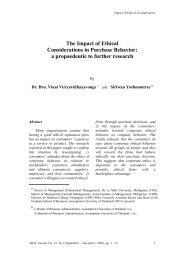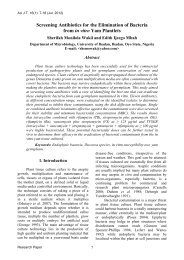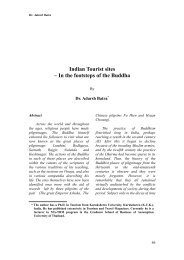PDF format - AU Journal - Assumption University of Thailand
PDF format - AU Journal - Assumption University of Thailand
PDF format - AU Journal - Assumption University of Thailand
You also want an ePaper? Increase the reach of your titles
YUMPU automatically turns print PDFs into web optimized ePapers that Google loves.
continue to learn outside <strong>of</strong> the<br />
classroom.<br />
This gap can be bridged if inservice<br />
training and education are<br />
provided for those without relevant<br />
qualifications by those with<br />
qualifications in Applied Linguistics<br />
specialising in foreign or second<br />
language teaching. A number <strong>of</strong><br />
significant teacher education issues,<br />
suggest Kirkpatrick and Prescott,<br />
include “persuading teachers <strong>of</strong> the<br />
achievability and desirability <strong>of</strong> change,<br />
at the same time endeavouring to<br />
maintain both balance (content v skills)<br />
and flexibility (diverse contexts), the<br />
need to accommodate diversity, the<br />
value <strong>of</strong> fostering interaction in order to<br />
encourage reflection, the need to<br />
expand teachers’ horizons with respect<br />
to both knowledge and skills”<br />
(Kirkpatrick & Prescott, 1995, p. 104).<br />
English Language Teaching Staff’s<br />
Inadequate ELT Training<br />
twenty tertiary institutions surveyed<br />
<strong>of</strong>ten lack specific education and<br />
training in applied linguistics and<br />
second/foreign language teaching(see<br />
Table 4).<br />
This means that they are not in a<br />
good position to evaluate the<br />
effectiveness <strong>of</strong> current teaching<br />
methods and curricula or to assess the<br />
likely effect <strong>of</strong> various types <strong>of</strong> change.<br />
Other findings that seem to be <strong>of</strong> some<br />
significance are: (i) there is <strong>of</strong>ten little<br />
relationship between what is taught and<br />
what is tested and assessed; (ii) the<br />
perception <strong>of</strong> students and teachers in<br />
relation to what is taught, how it is<br />
taught and what problems students have<br />
is <strong>of</strong>ten different; (iii) teachers appear<br />
to have accepted the need for change<br />
and to have adopted the rhetoric <strong>of</strong><br />
change without necessarily having<br />
implemented major changes and<br />
without fully understanding the issues<br />
involved, with the result that changes<br />
may appear to be unsystematic and/or<br />
contradictory(see Table 5).<br />
The major finding here is that<br />
English language teaching staff in the<br />
Table 4 Respondents Educational Background<br />
Applied<br />
Linguistics<br />
English<br />
Language<br />
Teaching<br />
Others<br />
Total<br />
19 (121) =<br />
15.7%<br />
25 (121) =<br />
20.7%<br />
77 (121) =<br />
63.6% 100%



